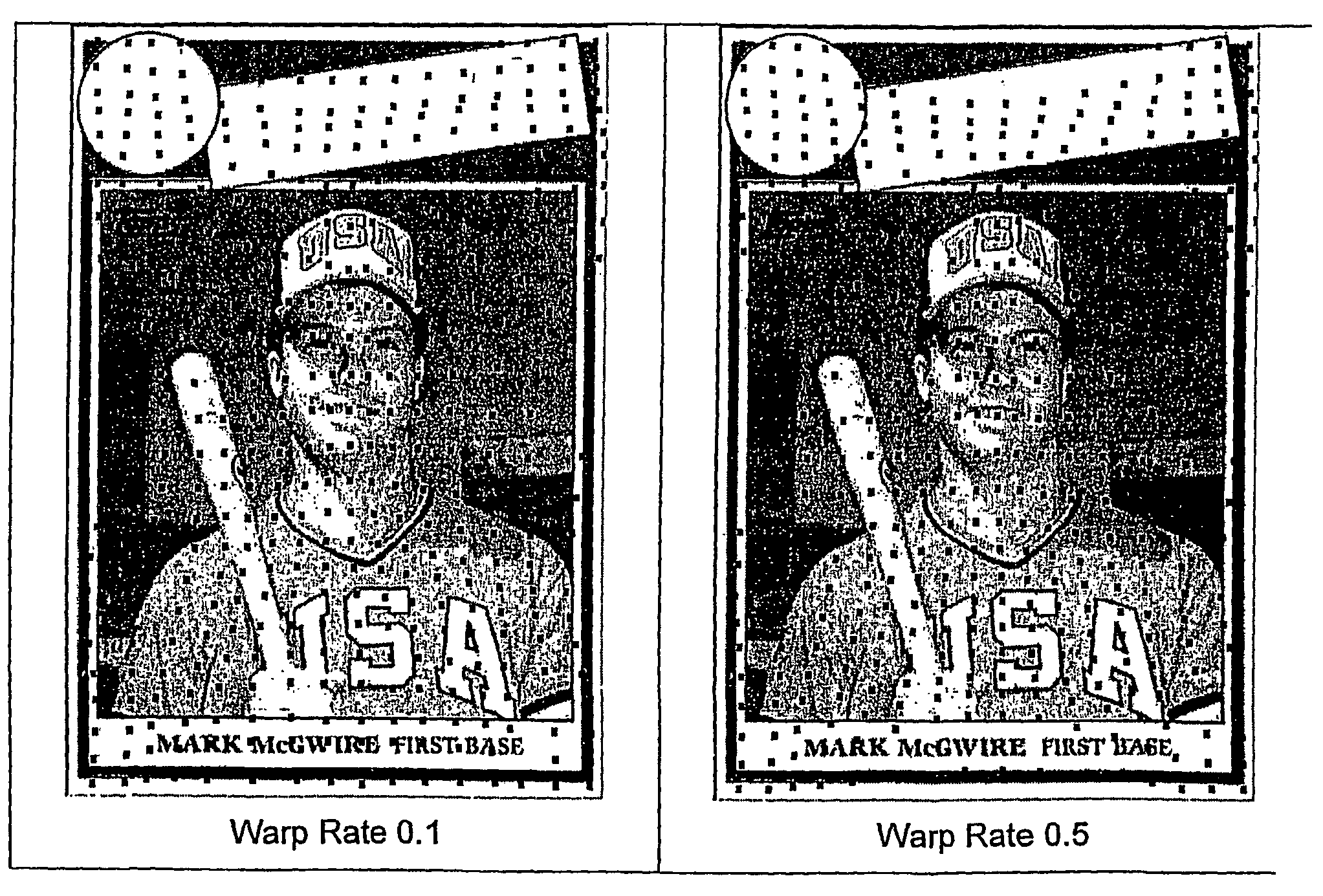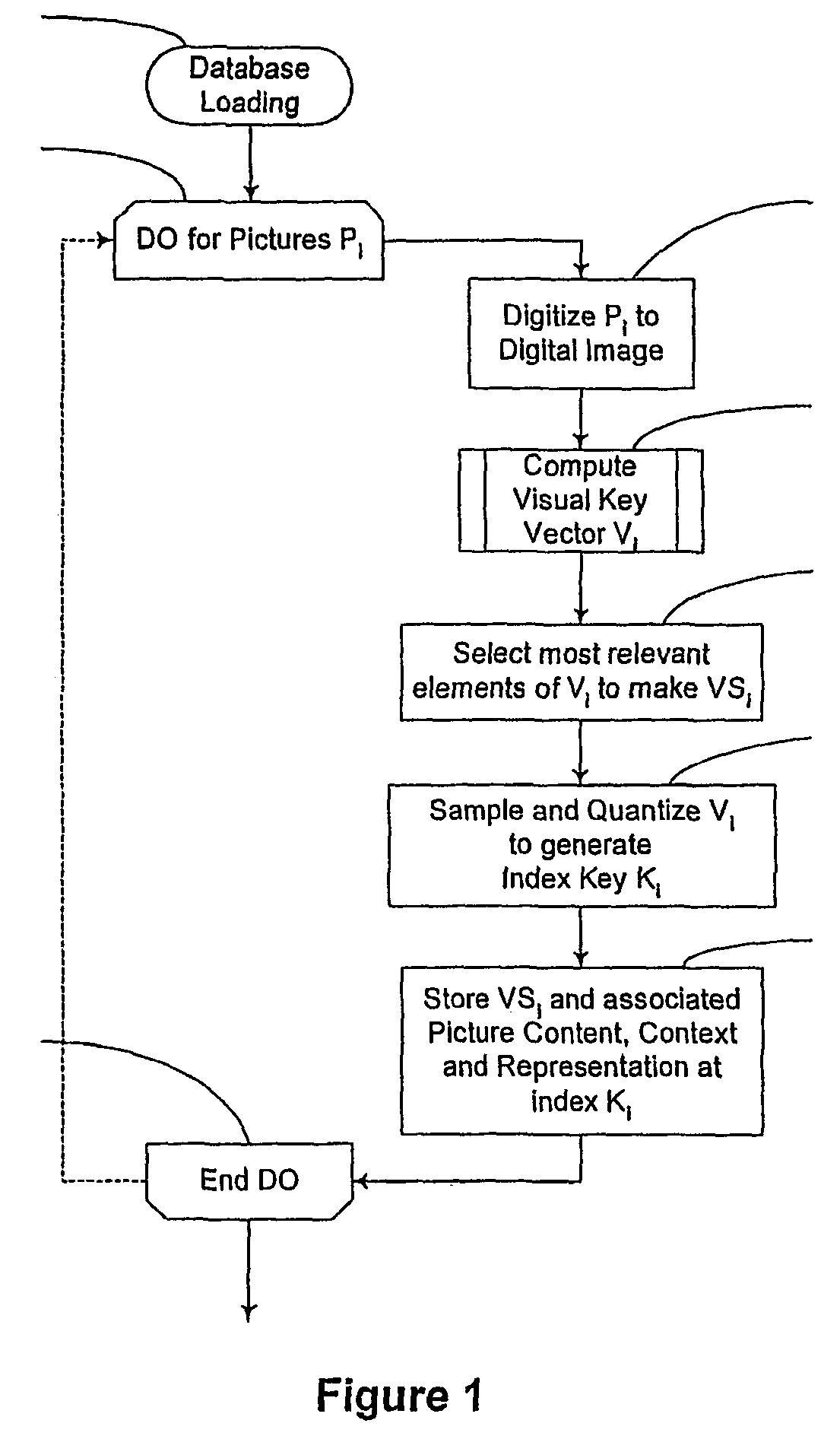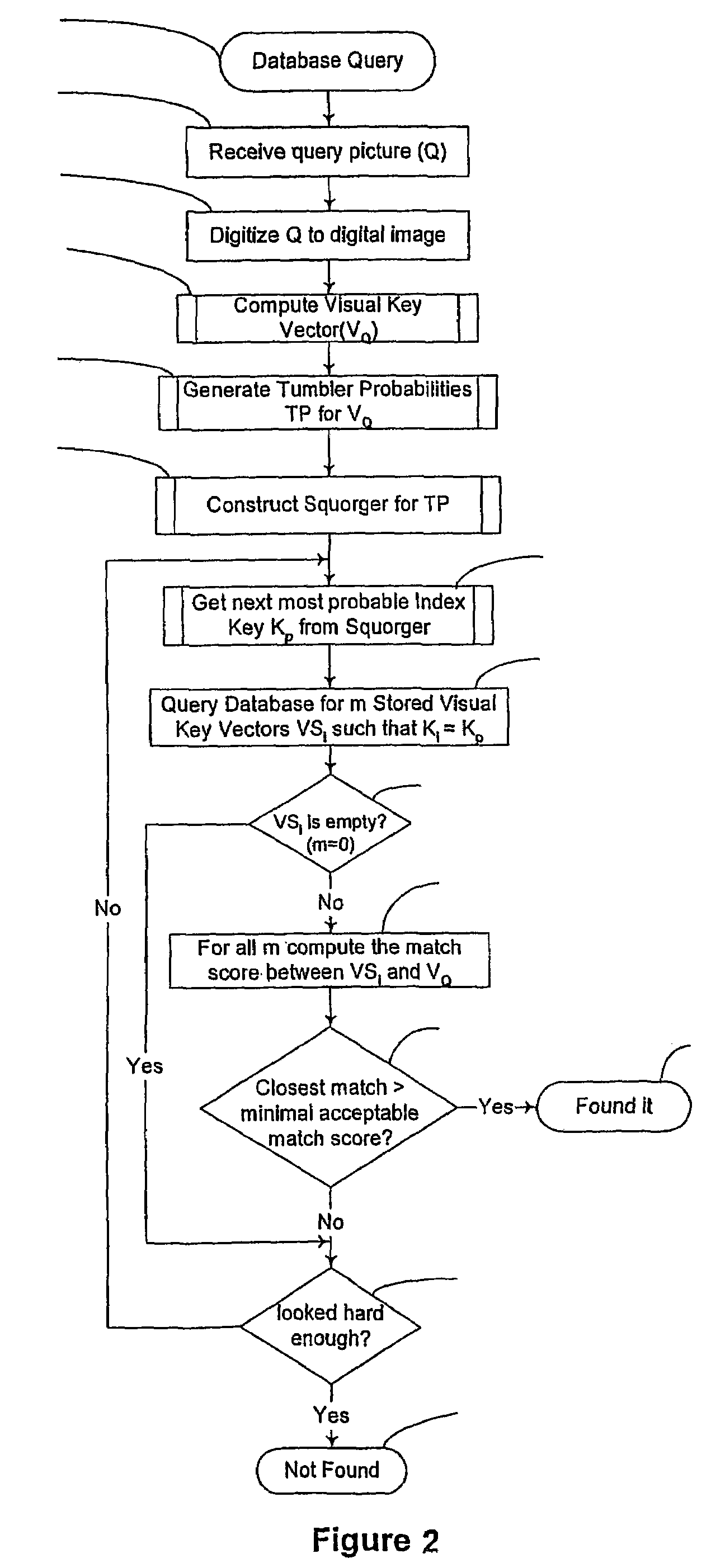Digital media recognition apparatus and methods
- Summary
- Abstract
- Description
- Claims
- Application Information
AI Technical Summary
Benefits of technology
Problems solved by technology
Method used
Image
Examples
Embodiment Construction
show pictures that might be included in a Visual Key Database. These examples show some (but certainly not all) of the variety of the kinds of Pictures that can be effectively stored and retrieved in a Visual Key Database. In each case, the Representation is followed by the Context and Content.
Discussion of Picture Objects
[0194]A Picture Object holds information completely describing the composition of a Picture. Examples of Picture Objects include a photographic negative, a photographic print, a 35 mm slide, a halftone magazine illustration, an oil painting, a baseball card, a comic book cover, a clip art file, a bitmapped digital image, a jpeg or gif file, or a hologram. A Picture Object may also hold information in addition to Picture Composition information, for example, a 35 mm photographic negative displays its frame number, while the back of a baseball card generally gives player statistics for the player pictured on the front side.
[0195]A Picture Object may be as simple as a...
PUM
 Login to View More
Login to View More Abstract
Description
Claims
Application Information
 Login to View More
Login to View More - R&D
- Intellectual Property
- Life Sciences
- Materials
- Tech Scout
- Unparalleled Data Quality
- Higher Quality Content
- 60% Fewer Hallucinations
Browse by: Latest US Patents, China's latest patents, Technical Efficacy Thesaurus, Application Domain, Technology Topic, Popular Technical Reports.
© 2025 PatSnap. All rights reserved.Legal|Privacy policy|Modern Slavery Act Transparency Statement|Sitemap|About US| Contact US: help@patsnap.com



